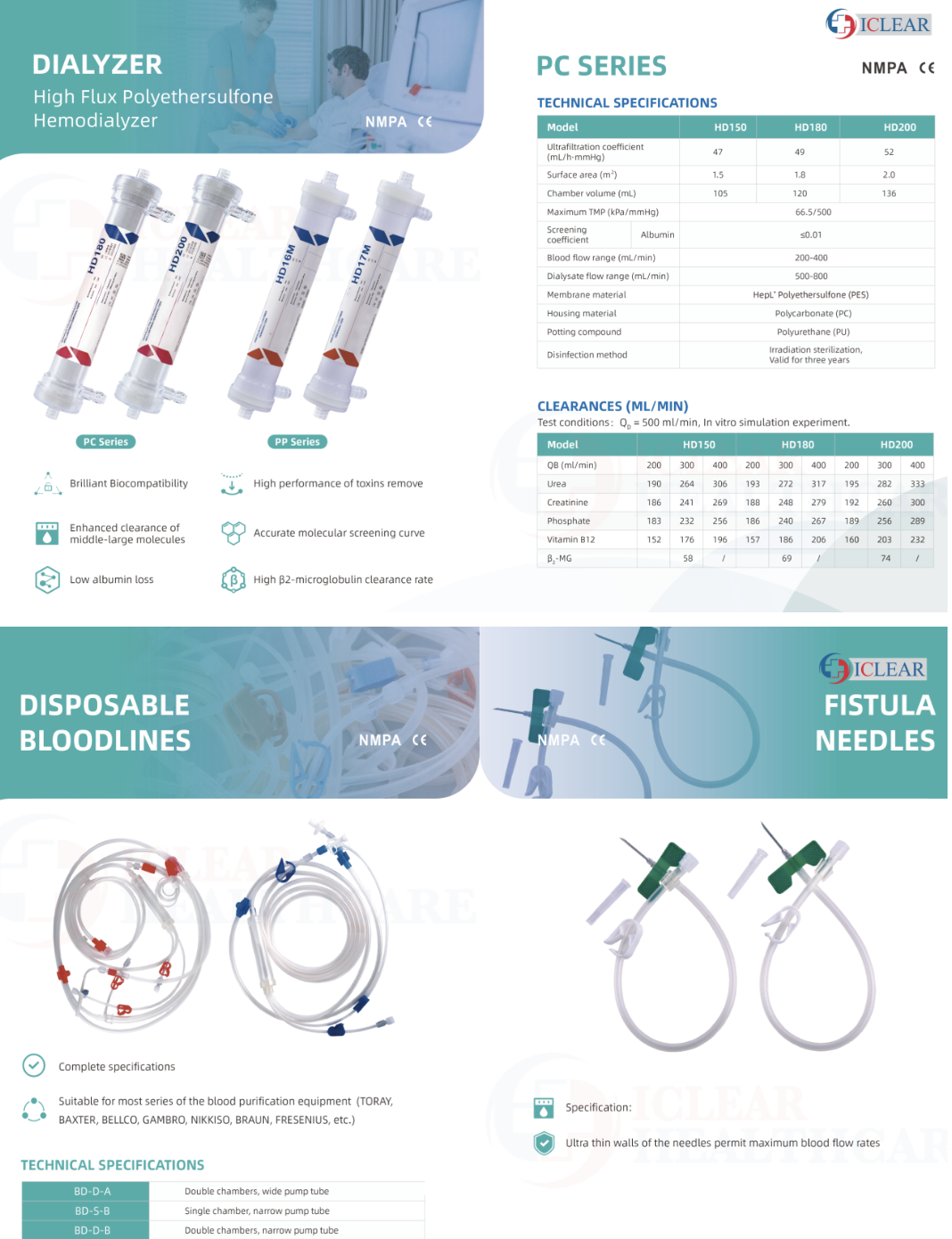
Medical Hemodialysis Consumables Hemodialyzer Hemodialysis Powder Hemodialysis Blood Line Set
CHH-HA1
Application
Establish an extracorporeal circulation channel for blood dialysis therapy.
Features and Benefits
All tubes are made from medical-grade, and all components are manufactured in the original.
1. Pump Tube: With high elasticity and medical-grade PVC, the shape of the tube remains the same after continuous pressing of 10 hours.
2. Drip Chamber: several sizes of drip chambers are available.
3. Dialysis Connector: Extra large designed dialyzer connector is easy to operate.
4. Clamp: clamp is made of hard plastic and designed larger and thicker to guarantee sufficient stop.
5. Infusion Set: It is convenient to install and uninstall, which ensures precision infusion and safe priming.
6. Drainage Bag: closed priming to meet the requirements of quality control, single-way drainage bag, and double-way drainage bag available.
7. Customized Designed: Different sizes of the pump tube and drip Chamber to meet the requirements of customers.
Specifications:
| Code | PUMP SEGMENT(IDxODxLength)mm | Chamber OD mm | DESCRIPTIONS |
| FBA101V01 | 6.4x9.75x420 | 22 | B.Braun(HS-SECURA) |
| FBA001V05B1 | 7.9x12.1x420 | 22 | Gambro(except AK95), Fresenius(Venous Chamber 22mm) Nikkiso, Baxter, Nipro, Toray, JMS. B.Braun. Bellco. |
| FBA001V02B2 | 7.9x12.1x420 | 30 | Fresenius (Venous Chamber 22mm) |
| FBA001V05B3 | 7.9x12.1x420 | 20 |
Gambro AK95, Baxter, Nikkiso, Nipro, Toray, JMS, B. Braun, Bellco. |

